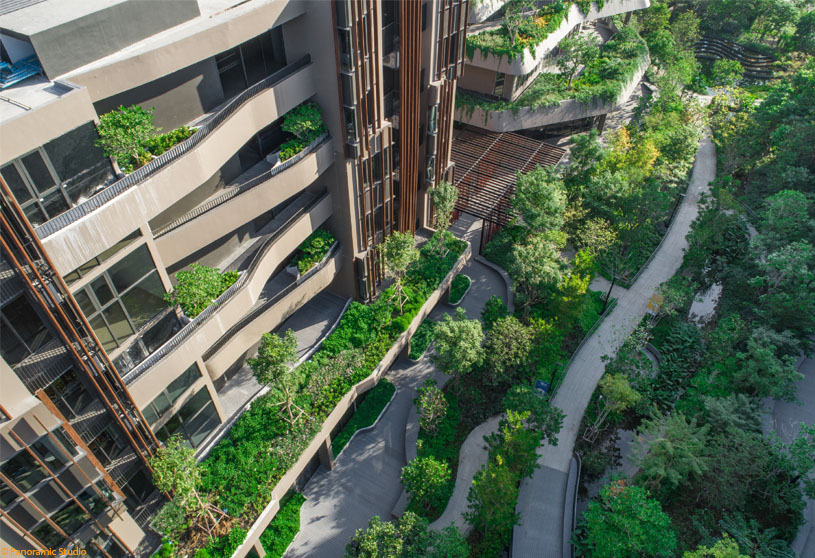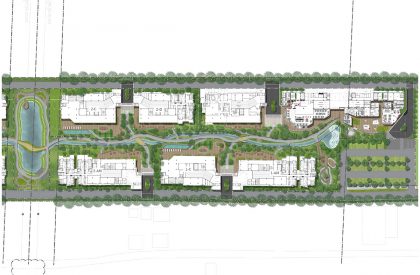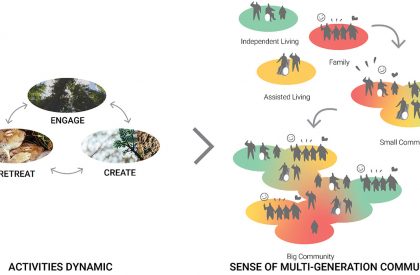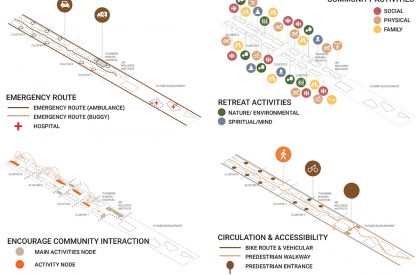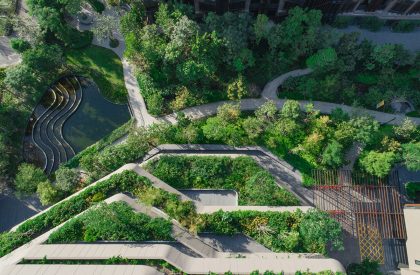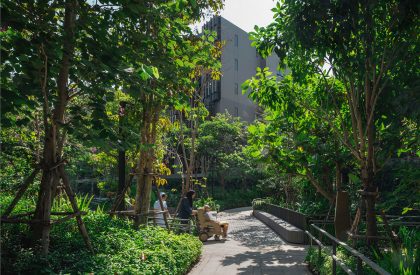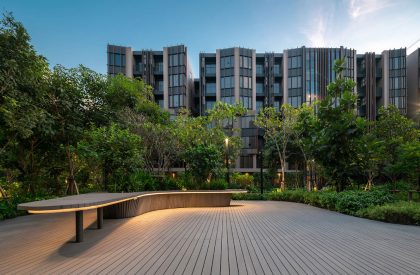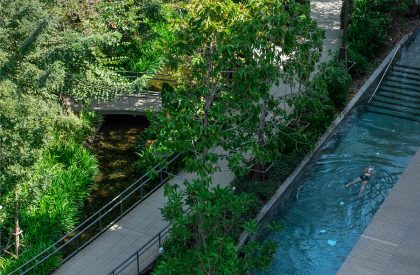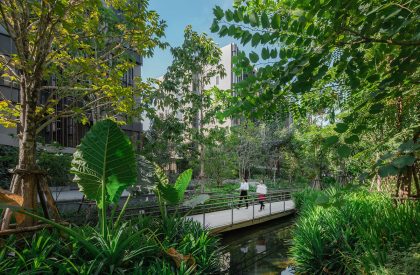Excerpt: The architecture project Jin Wellbeing County, by Shma Company Limited is a living complex filled with serenity and multi-generation spirit amidst seamless harmony with nature, therefore, flourishing a good quality of life. Diverse activity dynamics are designed through ‘Retreat’, ‘Engage’ and ‘Create’ concepts which enhance all-round living experience. Through research, ‘The Seven Dimensions of Wellness’ are embedded in the landscape design of the project, marking beneficial approaches for aging life.
Project Description

[Text as submitted by architect] As many parts of the world are becoming an aging society – where more than 20% of the population are older than 60 years old, citizens need to rethink how they build their city for everyone to live meaningfully after retirement.


Seeking a new typology of future communities, ‘Jin Wellbeing County’ has become the first senior oriented mixed-use development in Thailand comprising residence, commercial unit, and hospital. Its planning focuses on 3 principles – ‘Sustainable Nature’, ‘Physical Wellbeing’, and ‘Sense of Community’, responding to seniors’ needs.



Diverse activity dynamics are designed through ‘Retreat’, ‘Engage’ and ‘Create’ concepts which enhance all-round living experience. Together with the designers’ initial research on “The Seven Dimensions of Wellness,” marking beneficial approaches for aging life, all aspects are embedded in the landscape design to truly achieve “Community in the Ravine Forest.”


Located in the Chao Phraya Flood Plain, the site of Jin Wellbeing County in Pathum Thani, the suburb of Bangkok, is previously known for agricultural lowland, which gets flooded seasonally. Nonetheless, as time passed by, the area gradually became urbanized by rows of buildings, housings, and infrastructure, leaving the possibility of severe flooding. By blocking the flow of water, Bangkok and its suburbs have faced critical phenomena such as 2011 Thailand Floods and regular flash floods during the rainy season.



As a result, Jin Wellbeing County is designed thoughtfully with a consideration to the public and surrounding site, by adopting “Polder System,” which helps retain water before releasing to public amenity, apart from doing typical landfill methods. This approach potentially helps maintain flood in urban areas, leading to a resilient living, if used in every site around the city.




Despite the full-phase masterplan with all mixed-use facilities, the project is now completed within 58,332 square meters of Phase I which comprises Jin Wellness Institute and Thonburi Burana Hospital and Low-rise Residential Cluster 1 and 2. The project exclusively offers 22,485 square meters of green spaces – both on-ground and on-structure, which equals to 40% of the site area, exceeding the 30% standard requirement.



To ensure activity dynamics, space planning is designed to create chance of meeting through gathering spot, edible garden, outdoor dining area along with jogging tracks and swimming pool. Safety is a main priority, reflecting on all-ramp access with equipped handrails, seating at every 30-50 meters and adequate, adequate lighting and rough surface materials to reduce risk of slippery.



Therapeutic garden is also provided with exercise steps and reflexology path as a space to help rebuild physical strengths amidst colorful and fragrant species. Imitating a forest, variety of plants are grown mixing together in the landscape. Together with smart water management system, comprising creek, bioswale and biopond they help the project in handling flood during rainy months, supply water for dry season and eventually create food source and habitat for urban wildlife.


To conclude, Jin Wellbeing County is truly a living complex filled with serenity and multi-generation spirit amidst seamless harmony with nature, therefore, flourishing a good quality of life.
